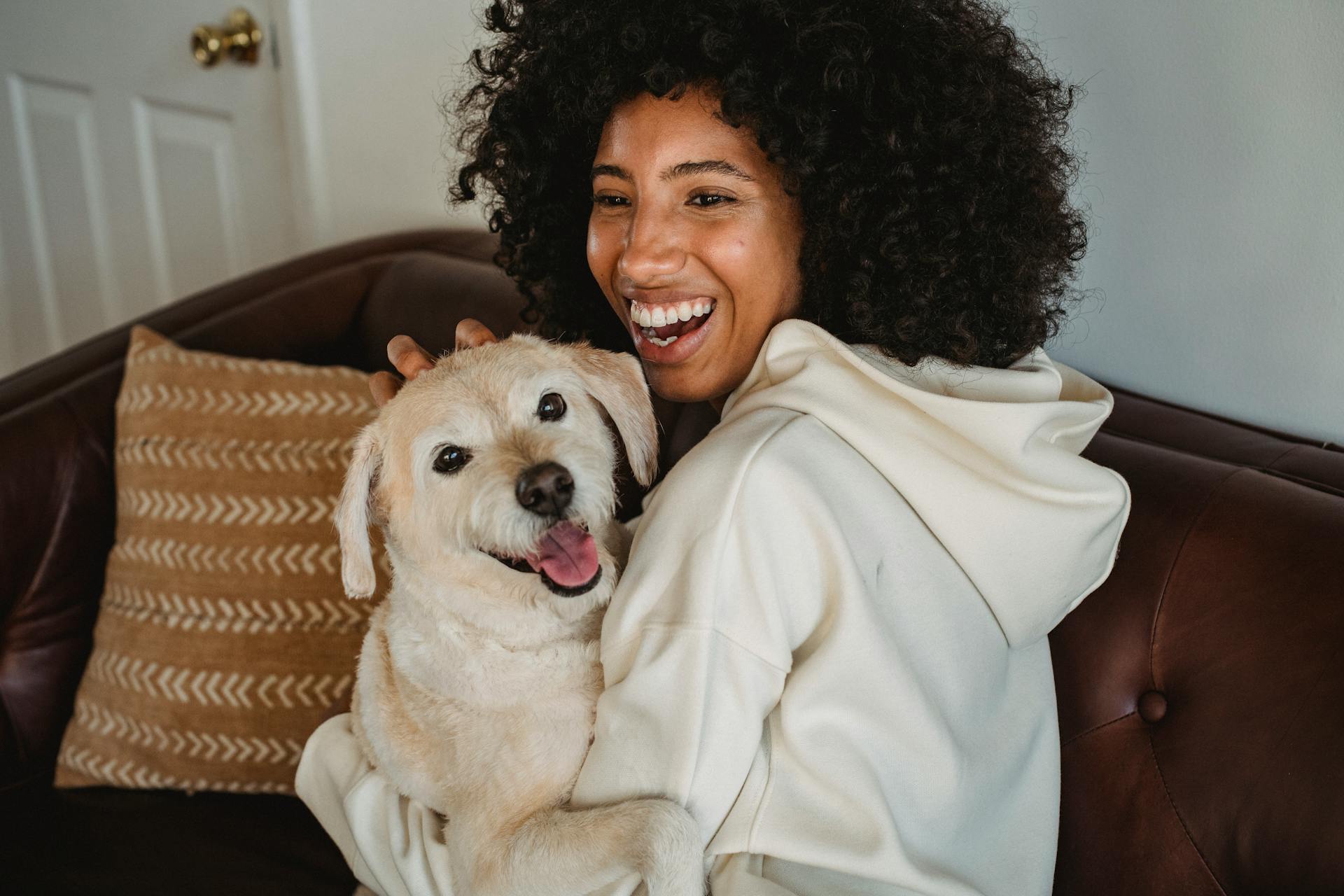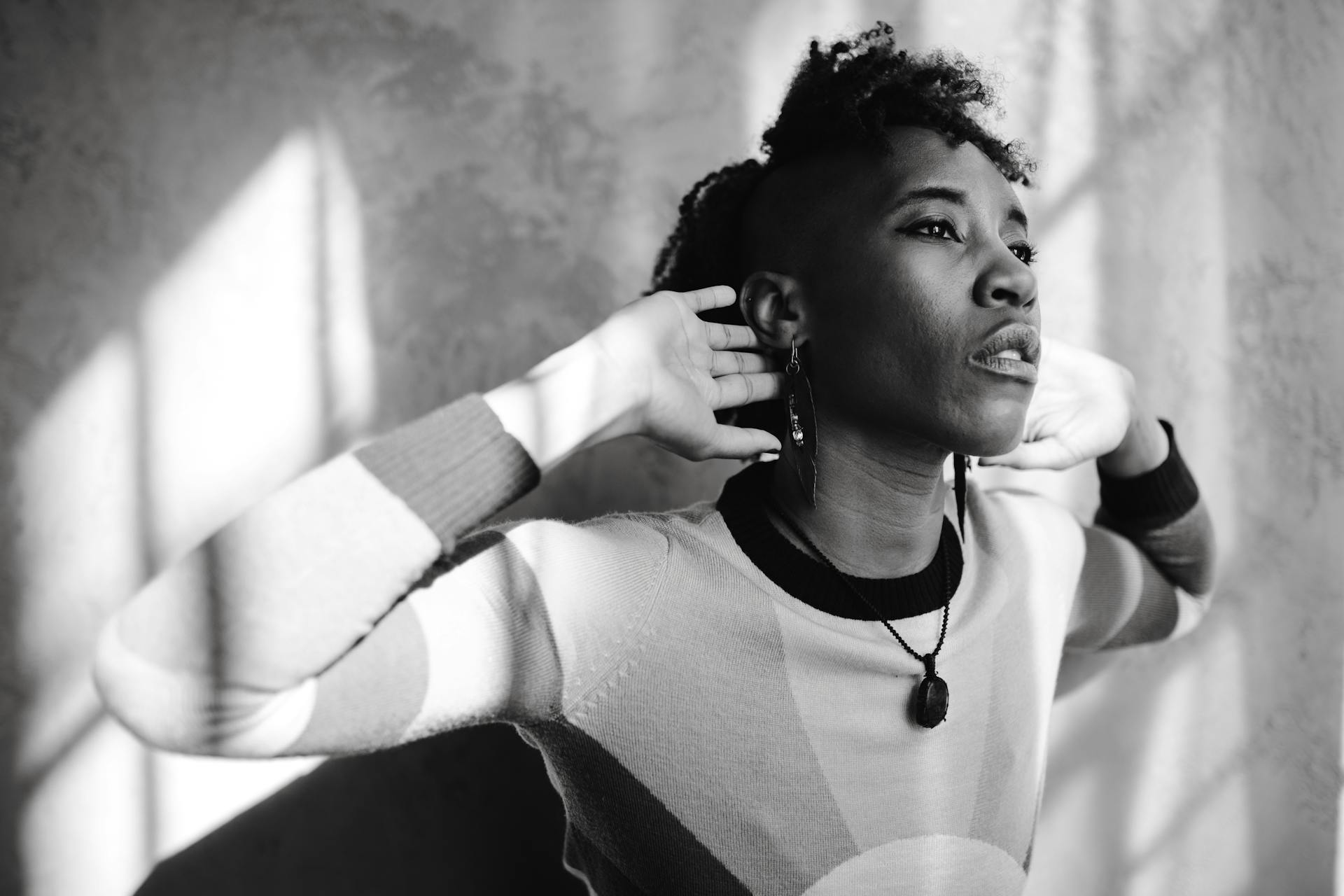
The South African Boerboel is a majestic breed that originated on the farms of South Africa. They were bred to guard livestock and property.
Their short coats require minimal grooming and come in a variety of colors, including fawn, wheaten, and red.
Boerboels are known for their loyalty and protective nature, making them excellent watchdogs. They are naturally suspicious of strangers and will defend their family if necessary.
With proper training and socialization, Boerboels can thrive in a variety of living situations, from apartments to homes with large yards.
Health
The South African Boerboel is a robust and healthy breed, but like all breeds, they can be prone to certain health issues. They generally have a shorter lifespan than small-breed dogs, living between 9-11 years.
Hip dysplasia and elbow dysplasia are conditions that can affect the Boerboel, causing pain and discomfort. These conditions occur when the hip or elbow joint is malformed and rubs, leading to symptoms like limping or stiffness.
Boerboels are also susceptible to eye conditions, including ectropion and entropion, which can cause eyelid issues. Regular monitoring by a veterinarian and an ophthalmologist can help catch these conditions early on.
Dilated cardiomyopathy (DCM) is a genetic heart condition that can affect the Boerboel, causing the heart to become enlarged and the heart muscle to thin and weaken. Treatment typically involves medications and regular visits to a veterinary cardiologist.
In addition to these conditions, Boerboels can also be prone to bloat, a potentially life-threatening gastrointestinal problem. Responsible breeders will screen for genetic problems that commonly affect the breed, but it's still essential to monitor your Boerboel's health closely.
Here are some common health issues that can affect the Boerboel:
- Hip dysplasia: a condition where the hip joint is malformed and rubs, causing pain
- Elbow dysplasia: a condition where the elbow joint is malformed and rubs, causing pain
- Eyelid issues: ectropion and entropion can cause eyelid problems
- Dilated cardiomyopathy (DCM): a genetic heart condition that can cause the heart to become enlarged and the heart muscle to thin and weaken
- Bloat: a potentially life-threatening gastrointestinal problem
- Heart disease: encompasses various cardiac issues
- Eye conditions: may impact their vision
- Vaginal hyperplasia: a reproductive system disorder
- Juvenile epilepsy: a neurological disorder
Diet
Boerboels typically do well on a high-quality commercial dog food formulated for large breeds.
Choosing the right food is crucial, so be sure to select a formula that matches your dog's stage in life - whether they're a puppy, adult, or senior.
Boerboels are prone to obesity, so it's essential to count all the treats you give during training and just because you love your pup.
Even high-energy dogs like Boerboels need a balanced diet to stay healthy, so make sure to choose a food that meets the nutritional standards set by the Association of American Feed Control Officials.
If you're unsure about your dog's diet or mealtime strategy, chat with your vet - they're in the best position to help you choose the right food for your Boerboel based on their unique needs.
Behavior and Training
South African Boerboels are agile dogs that require daily physical and mental stimulation to prevent destructive behavior. They need long walks or playtime in a fenced yard to stay happy and healthy.
Boerboels are naturally suspicious of new people, animals, and situations, making training and socialization crucial from an early age. Consistent boundaries and positive reinforcement are essential for their development.
Early socialization is key, starting with puppy preschool at 8-10 weeks old, where they learn to play nicely with other puppies and meet new people. Enrolling them in obedience classes later on helps them learn basic commands and how to walk nicely on a leash.
Boerboels need a confident and calm owner who can provide consistent training and set clear boundaries. They're not suitable for first-time owners, as they require patient and assertive training to prevent aggression and destructive behavior.
Behavior and Training
Boerboels need to be kept physically and mentally stimulated, which can be met with daily long walks or playtime in a fenced yard.
Their intelligence can help them thrive in obedience and agility training, but they require a trainer who will consistently set boundaries and use positive reinforcement.
Boerboels are generally calm at home, but their gentle demeanor can make them suitable for families with children who understand how to interact with dogs.
They may be best in homes without smaller children who could be easily harmed by an accidental bump or squish from this enormous dog.
Boerboels are playful, intelligent, and eager to please, and they're happiest when given a job to do.
They're not a breed for first-time owners, as they require patient and consistent training, along with early socialization to prevent aggression.
Long walks, vigorous play sessions, and challenging devices like puzzle feeders can help them get the activity they need.
Boerboels can become destructive and have been known to chew if their physical and mental needs are not met.
Their confident nature and independent thinking can make them challenging to manage, but with the right training and socialization, they can be wonderful companions.
Early socialization and consistent training are vital for helping this breed be comfortable in new situations.
Boerboels have strong protective instincts, and they should be discerning and accepting of friendly strangers with proper introductions.
They should not be left alone with other pets, especially if they haven't been raised in the same household.
Boerboels require a confident and calm owner who can provide them with the structure and guidance they need.
Positive reinforcement training methods, such as praise, treats, and playtime, can be effective in training a Boerboel.
Consistency is key when training a Boerboel, and they should be expected to follow the same rules and commands every day.
Standardizing and Recognizing
The Boerboel's history is a fascinating example of how a breed can evolve and standardize over time. In the early 1980s, a movement in South Africa aimed to organize the Boerboel as a recognized breed.
This effort ultimately led to the Boerboel's recognition in the United States, where it soared through the AKC ranks. The breed was added to the AKC's Foundation Stock Service in 2006 and reached full recognition in 2015.
However, the breed's popularity also brought some challenges, particularly with regards to color standards. The introduction of historically incorrect colors like black led to chaos in the breed and disagreements among breeders.
The controversy surrounding black Boerboels was so severe that it led to a fracturing of breed clubs and a disagreement about how to handle the influx of foreign blood.
Recommended read: Akc Boerboel
Size
When considering the size of your Boerboel, it's essential to remember that they can be quite large. Boerboels are large dogs, with males averaging 24 to 28 inches in height at the shoulder.
Females tend to be slightly smaller, ranging from 22 to 25 inches in height. This size difference is important to consider when choosing a breed.
Boerboels usually weigh between 110 and 200 pounds, which can be a significant factor in determining the right living space for your dog.
Readers also liked: Boerboel Size and Weight
Head
The Boerboel's head is a remarkable feature, and its shape and size are key to understanding their behavior and training needs. The head is blocky, broad, deep, square, and muscular, which means they have a strong physical presence that demands respect.
Moderate wrinkles on the head are a sign of attentiveness, so if you see wrinkles, it's a good idea to engage with your Boerboel and see what they need. The head should be fairly free of wrinkles when relaxed, which can be a sign of calmness and contentment.
The muzzle blends smoothly with the skull, which is important to remember when interacting with your Boerboel, as they can be sensitive about their face. The muzzle is broad and deep, tapering slightly to the front, and is on the same horizontal plane as the skull.
The nasal bone measures about one-third the total length of the head, which can be a useful reference point when checking your Boerboel's head shape. The length of the top of the skull, measured from the middle of the eye to the end of the occiput, is roughly equal to the length of the nasal bone.
The lips of a Boerboel do not extend below the lower jaw, which means they have a relatively short muzzle and can be prone to drooling if they're not properly trained.
Grooming and Appearance
The Boerboel's grooming needs are minimal, making them a great choice for busy owners. They have a short, medium-shed coat that requires weekly brushing to manage shedding and keep the coat healthy and shiny.
Boerboels can come in a range of colors, including red, fawn, brown, brindle, and black, with some having spots of white on their coat. They often have dark markings around their eyes, mouths, and noses.
Their ears are medium-sized, V-shaped, and rounded at the tip, and they usually fold over and lay flat. Boerboels don't typically have cropped ears. Their eyes are usually dark brown and have an intelligent expression.
A table summarizing the Boerboel's grooming needs:
Boerboels are generally low-maintenance when it comes to grooming, but they do require regular care to stay healthy and happy.
Grooming
Grooming is a breeze with Boerboels, thanks to their short, medium-shed coat. They're not too high maintenance, but regular grooming will keep their coat healthy and shiny.
To manage their shedding, brush your Boerboel once every week or two with a curry comb or soft grooming glove. You can also check their ears for debris and wax buildup while you're brushing.
Bathing is only necessary about every four to six weeks, unless your Boerboel has been super active or super drooly. You may want to keep a towel handy to spot clean them or your furniture.
Boerboels need regular nail trimming, and bath-time is a great opportunity to check their nails. You'll know it's time for a trim when you can hear your pup clacking on your kitchen floors.
Daily dental care is also important, and brushing your Boerboel's teeth regularly will help prevent tartar buildup. Get your puppy used to the habit while they're young, so they'll be comfortable with it as they get older.
Here's a quick rundown of your Boerboel's grooming needs:
- Brushing: once every week or two
- Ear cleaning: weekly
- Bathing: every 4-6 weeks
- Nail trimming: every 2 weeks
- Dental care: daily
General Appearance
The Boerboel's general appearance is truly impressive. They have a large, muscular build with a strong bone structure, making them a formidable presence.
Their skin is relatively loose-fitting and flexible, without major wrinkles, which is a unique feature compared to other breeds. This loose skin helps them move freely and flexibly.
The Boerboel's body is slightly longer than tall, with a proportionate balance of all body parts. This balance is key to their athletic working abilities and stamina.
A well-balanced Boerboel should have a level, straight-appearing topline, with a defined muscular ridge above the withers. This is essential for their overall structure and movement.
Disqualifications for the breed include unilateral or bilateral cryptorchidism, as well as certain coat colors such as all shades of brown (tan, red) or fawn.
Females should ideally be 24 inches tall, with a minimum height of 21 inches.
Hindquarters
The hindquarters of your dog are a crucial aspect of their overall appearance. The hindquarters are well angulated, well-muscled and deep and broad, especially in bitches.
A broad and deep croup is essential, and it should be set slightly sloping. The upper thighs must be broad, deep and muscular, with substantial thickness when viewed in profile and from the rear.

Correctly angulated lower thighs are a must, and they should be of equal length to the upper thigh. The hocks must be strong and sturdy, of medium length, in proportion to the rest of the leg.
The rear pasterns are relatively short, strong and of adequate girth. They should be parallel with each other when viewed from the rear, and vertical when viewed from the side.
Removal of rear dewclaws is preferred but not mandatory.
Tail
The tail of a Boerboel is a natural extension of the spine, set fairly high, and well covered with hair. It's a distinctive feature that sets them apart.
Long tails taper to the end and are sabre shaped, reaching down to the hocks or little below. This is a characteristic you'll want to look for in a Boerboel's appearance.
The natural tail of a Boerboel is quite variable from dog to dog, but most are long and tapering. This is due to the breed's genetic diversity.
Docked tails are traditionally docked at the third or fourth caudal vertebrae. This is a common practice in the breed.
History and Origins
The South African Boerboel's history is a fascinating one, rooted in the country's early European settlement. The breed's name, Boerboel, comes from Afrikaans/Dutch words for farmer and dog, reflecting its origins as a utilitarian farm dog.
The Boerboel's ancestors were brought to South Africa by Dutch settlers in the 1600s, who needed strong dogs to defend their homesteads and hunt wildlife. These early dogs were a mix of breeds, including Bullenbeissers and Bulldogs, which were later crossed with Mastiffs and other breeds.
In the 1920s, DeBeers imported Bullmastiffs to guard their diamond mines, which were then crossed with Boerboels. This breeding helped solidify the Boerboel's appearance, which is characterized by its large, blocky head and tremendous bone structure.
History
The Boerboel breed has a rich and fascinating history that dates back to the 17th century. The name "Boerboel" comes from the Afrikaans/Dutch words for farmer ("boer") and dog ("boel").
Jan van Riebeeck, the founder of Cape Town, first brought a dog to the Cape in 1652, marking the beginning of the Boerboel's history in South Africa. The breed's origins are deeply intertwined with the history of the Afrikaner farmers.
You might enjoy: History of the Boerboel

The Boers, a group of European settlers, brought large, strong dogs with them to South Africa, which bred with indigenous domestic dogs and other breeds over the centuries. These dogs were essential for defending homesteads and hunting wildlife such as hyenas, baboons, leopards, and other big cats.
The Boerboel's ancestors included the Bullenbeisser, a now-extinct breed that was involved in the development of the Boxer, and the Bullmastiff, which was imported to South Africa in the 1920s. The breed's appearance was also influenced by the Bulldog and the Dogue de Bordeaux.
In the 1800s, colonists began to protest British rule of South Africa and moved inland, scattering their dogs and leading to the development of isolated communities. The Boerboel's tenacity and strength were honed in this harsh environment, where only the strongest dogs could survive.
The Boerboel gained popularity in South Africa in the 1980s, thanks to the efforts of breed enthusiasts who sought to breed pure Boerboels again. The breed was eventually recognized by the United Kennel Club in 2016, and the American Kennel Club (AKC) recognized it in 2014, joining the Working group in 2015.
Suggestion: Guard Dogs in South Africa
Related Breeds
The Boerboel has a fascinating history, and understanding its related breeds can give us a glimpse into its origins. The Boerboel is a large and powerful dog, and its size is comparable to that of the Great Dane.
Some of the Boerboel's closest relatives include the Bullmastiff, the Greater Swiss Mountain Dog, and the Cane Corso. These breeds all share similar characteristics and traits with the Boerboel.
Here are some of the Boerboel's related breeds, grouped by category:
- Bullmastiff
- Greater Swiss Mountain Dog
- Great Dane
- Cane Corso
- Chesapeake Bay Retriever
- Belgian Malinois
These breeds are all known for their strength and athleticism, and they often make great companions for active families. The Boerboel's ancestors were likely bred for their hunting and guarding abilities, which is reflected in the breeds listed above.
General Information
The South African Boerboel is a massive dog breed that originated in South Africa to protect farms from predators like hyenas and lions. They stand 22-27 inches tall and weigh up to 200 pounds.
These dogs have a loving and calm personality towards their family, especially children, making them an attractive breed for many. However, their massive size and need for physical and mental stimulation mean they do best in a home with more experienced pet parents.
Boerboels are intelligent and trainable, but they can be stubborn at times, so early socialization and training is crucial. They are also relatively easy to train, which is a plus for many dog owners.
Here are some key characteristics of the Boerboel breed:
- Large and muscular: Boerboels typically stand 24-27 inches tall and weigh 110-170 pounds.
- Loyal and protective: Boerboels are fiercely devoted to their families and will do anything to protect them.
- Intelligent and trainable: Boerboels are intelligent dogs and are relatively easy to train.
- Good with children: Boerboels are naturally good with children and make great playmates.
- Low-maintenance coat: Boerboels have a short, dense coat that is easy to groom.
- Generally healthy: Boerboels are generally healthy dogs, but they can be prone to some health problems like hip dysplasia and heart disease.
Pet Considerations
The South African Boerboel is a loyal and loving companion, but they do require early socialization to feel comfortable around new people and situations. They need to learn that new things aren't scary or threatening.
This breed is not for every home, as they need a lot of space and food due to their large size, reaching up to 200 pounds. They'll do best in a home with a fenced yard where they can roam and sniff.
Boerboels are natural protectors of their children, but they can be clumsy and accidentally knock them over if they get too excited. Children should be taught how to interact with animals gently and respectfully.
Early socialization is key to helping your Boerboel puppy feel comfortable in new situations, but it's not a one-time task - it's an ongoing process that requires consistent training and attention.
Boerboels can be territorial and standoffish with unfamiliar dogs, so they may not be the best fit for homes with multiple dogs. However, with proper socialization, they can get along with other dogs in their household.
To keep your Boerboel happy and healthy, they need regular exercise and mental stimulation through play. This breed is not low maintenance, and they'll require a lot of time and attention from you.
Feeding and Diet
Feeding a South African Boerboel requires careful consideration of their specific needs.
Choose a large-breed diet that's suitable for your dog's life stage, whether they're a puppy, adult, or senior.
Boerboels are prone to gastric dilatation and volvulus (GDV) and bloat, so it's essential to feed them multiple smaller meals throughout the day.
Feeding two or three meals a day can help prevent these conditions.
Boerboels should not use elevated food bowls and should avoid vigorous exercise around mealtimes.
Full-grown Boerboels can weigh 150–200 pounds, which means they need a lot of food – typically up to about 10 cups every day.
Consult your veterinarian about how much you should be feeding your dog, as their dietary needs will change as they grow from puppyhood to adulthood and senior age.
A high-quality commercial dog food formulated for large breeds is a good choice for Boerboels.
Make sure to choose a formula that matches your dog's stage in life (puppy, adult, senior), and look for the statement that says it meets the nutritional standards set by the Association of American Feed Control Officials.
Boerboels are prone to obesity, so be sure to count all the treats you give during training and just because you love your pup.
Frequently Asked Questions
Are Boerboels legal in the US?
Yes, Boerboels are generally legal in the US, but importation from countries with active rabies, such as South Africa, may be restricted. Check with the US Department of Agriculture for specific regulations and requirements.
Is Boerboel stronger than Pitbull?
Yes, Boerboels are significantly stronger than Pitbulls, with a bite force 3.5 times greater and a substantial weight advantage. Their impressive physical attributes make them a formidable breed.
Can a Boerboel be a house dog?
Boerboels can make great house dogs for families with children who know how to interact with them, but they do require proper training and socialization
Are South African mastiffs good family dogs?
Yes, South African mastiffs, also known as Boerboels, are excellent family dogs due to their loving and calm nature towards their family, especially children. They are also intelligent and trainable, making them a great addition to many families.
What two breeds make a Boerboel?
The Boerboel is a cross between mastiffs and bulldogs, bred for guarding and hunting. This unique heritage makes the Boerboel a formidable and versatile breed.
Featured Images: pexels.com


